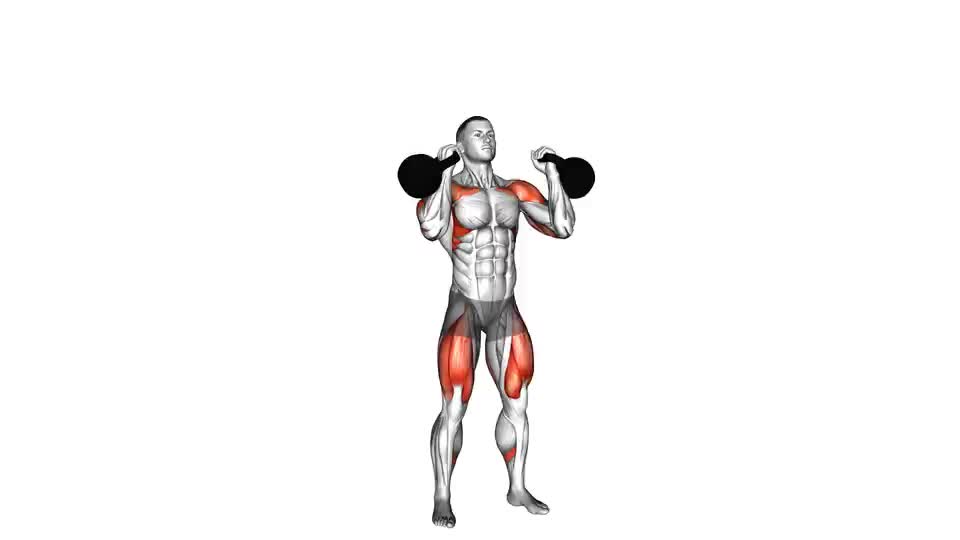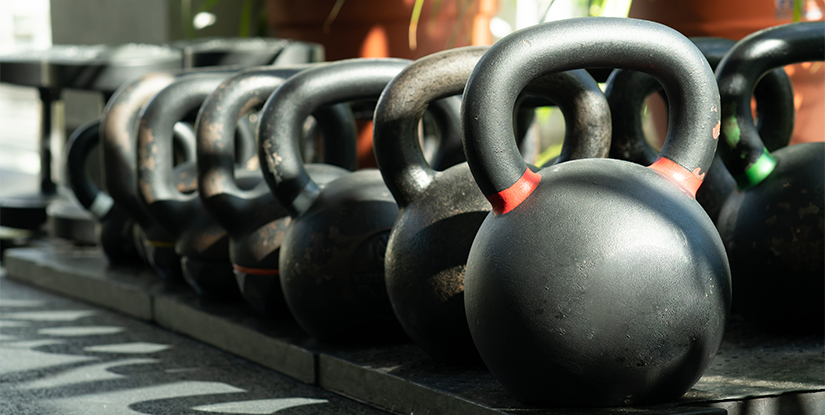At first, the kettlebell push press looked like cheating to me. I was all about strict presses—slow, controlled, no leg help. But eventually, I hit a wall. My coach said, “Use your legs,” and that’s when I gave the push press a real shot.
Honestly, I figured the kettlebell push press wouldn’t do much for my shoulders. But eventually, after sticking with it, I found out it wasn’t just easier than strict pressing—it was actually way smarter. I could move heavier weight, bang out more reps, and still feel that solid burn where it counts.
So yeah, instead of just watching vids and winging it, here’s what I picked up from actually putting in reps and figuring it out firsthand.
What Is the Kettlebell Push Press, Exactly?
It’s basically a strict press with a little boost from your legs—and yes, it definitely works both your legs and shoulders.
Instead of grinding the bell up slow, you dip just a bit (not a full squat) and use that leg drive to launch it overhead. It’s way more efficient when you want to press heavier or go longer without burning out.
You still finish strong with your arms, but that extra pop from the legs makes a big difference.

Step-by-Step: How I Learned to Do It Right
Here’s how I cleaned it up over time:
- Start with the kettlebell in rack position
- Do a quick dip at the knees (think short and sharp)
- Drive through the legs and let that force launch the bell
- Punch through the top and lock it out overhead
- Control the descent—no crashing down
- Keep your body tall—don’t lean back or arch like crazy
What helped me most was keeping the dip shallow and timing the drive with the press. If they’re out of sync, it gets sloppy fast.
What Muscles Does It Work?
I didn’t realize at first, but this move hits a lot more than I expected:
- Legs — mostly quads and glutes, thanks to the dip
- Shoulders + triceps — still doing the heavy lifting at the top
- Core — huge for balance and control
- Forearms and grip — especially with volume
Also, when you string reps together, it becomes sneaky conditioning work. You’ll be winded before you know it.
Kettlebell Push Press Form Tips, Fixes, and Real Progress
Mistakes I Made Early On
At first, I messed this up in all the classic ways.
- I dipped way too deep—basically turned it into a mini squat
- I pressed too soon, before the legs finished doing their thing
- My elbows flared out, and the bell would come down hard
- Everything felt rushed and kinda sloppy
Honestly, I thought I was doing a “push press,” but it was just chaos with momentum.
Form Tips That Actually Helped
Eventually, a few simple cues changed everything:
- “Dip, drive, delay” — this helped me slow things down and time the press better
- I used my phone to film reps—super helpful to check if my knees and elbows were syncing
- I started resetting between reps instead of rushing the set. That made it cleaner right away
Also, keeping my heels planted helped a lot. If you’re popping up onto your toes, you’re probably overdoing the dip or losing control.
How I Used It to Get Stronger
Once the form started clicking, I saw real progress—fast.
- I used it in EMOMs and short complexes to build volume
- Could go heavier than my strict press without frying my shoulders
- My shoulder endurance blew up, but I didn’t feel as beat up afterward
- It also became a nice bridge between strength and conditioning
Now it’s one of those moves I can plug into almost any workout—strength days, flow days, whatever.
Kettlebell Push Press vs. Strict Press vs. Jerk
Honestly, I used to lump all these together. But once I tried each one properly, I realized they feel way different — and each has its place depending on what you’re trying to get out of it.
Quick Comparison
| Movement | Feels Like… | Best For | My Take |
|---|---|---|---|
| Push Press | Fast and snappy | Power, volume, conditioning | My go-to when I want to move weight |
| Strict Press | Slow grind, no help | Raw shoulder strength | Great for control, but fatiguing fast |
| Jerk | Technical, double dip timing | Efficiency, max output, sport | Cool but tricky—takes time to learn |
When I Use Each One
- Push press fits better when I want volume but don’t want to kill my shoulders
- Strict press is my go-to for slow, grindy strength days
- Jerk? I only use it when I’m feeling sharp and want to dial in speed + technique
So yeah, this was my no-BS take on the kettlebell push press—what it does, how I made it work, and why it’s been a game changer. If you’ve been on the fence, give it a go—you might be surprised.

Hi, I’m the editor here at Leadman Fitness. We’re a manufacturer focused on producing top-quality barbells, plates, kettlebells, dumbbells, and strength training gear. I’ve been into sports and fitness for years, and I know my way around all kinds of gym equipment—both from using it and helping create it.
I spend a lot of time understanding the real problems people run into in the gym—whether it’s beginners trying to pick the right gear or experienced lifters looking for something more durable. I stay in close touch with our production team and talk directly with other equipment makers, so we’re always improving based on what real lifters and coaches are looking for.
What I share comes from hands-on experience—stuff that actually helps people train better, not just in theory, but in real gyms.
